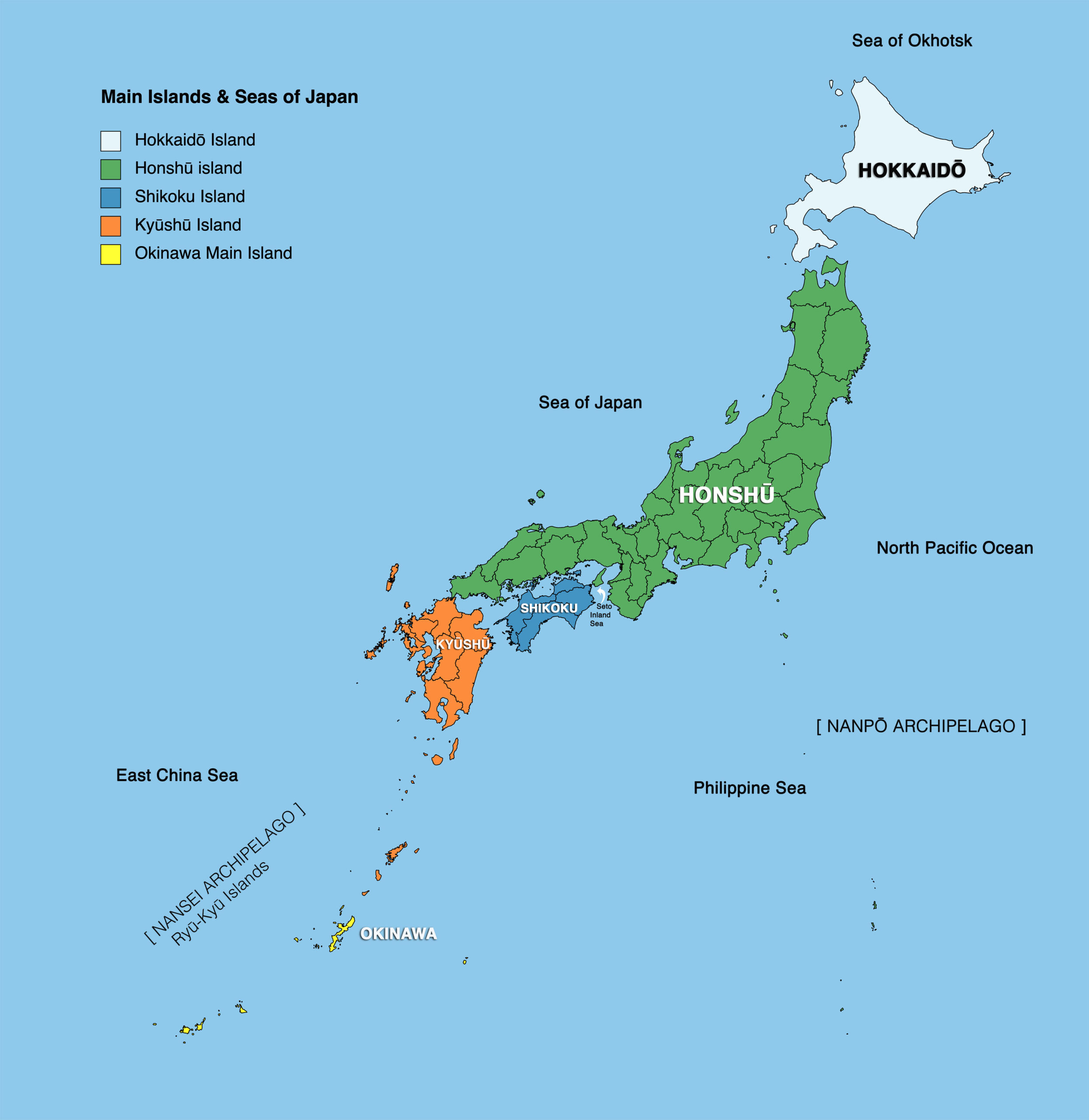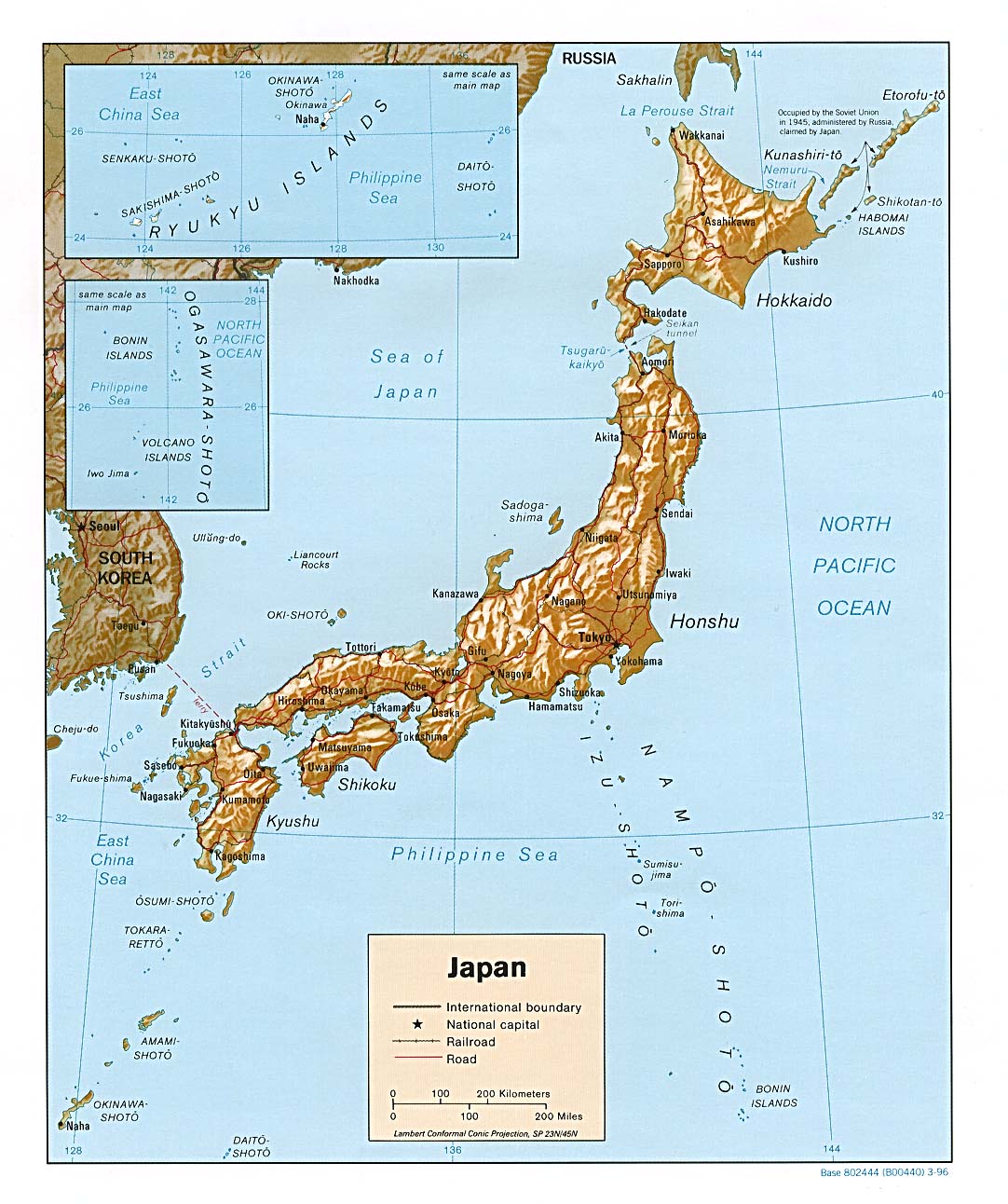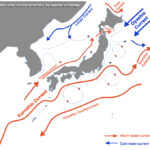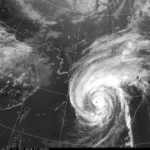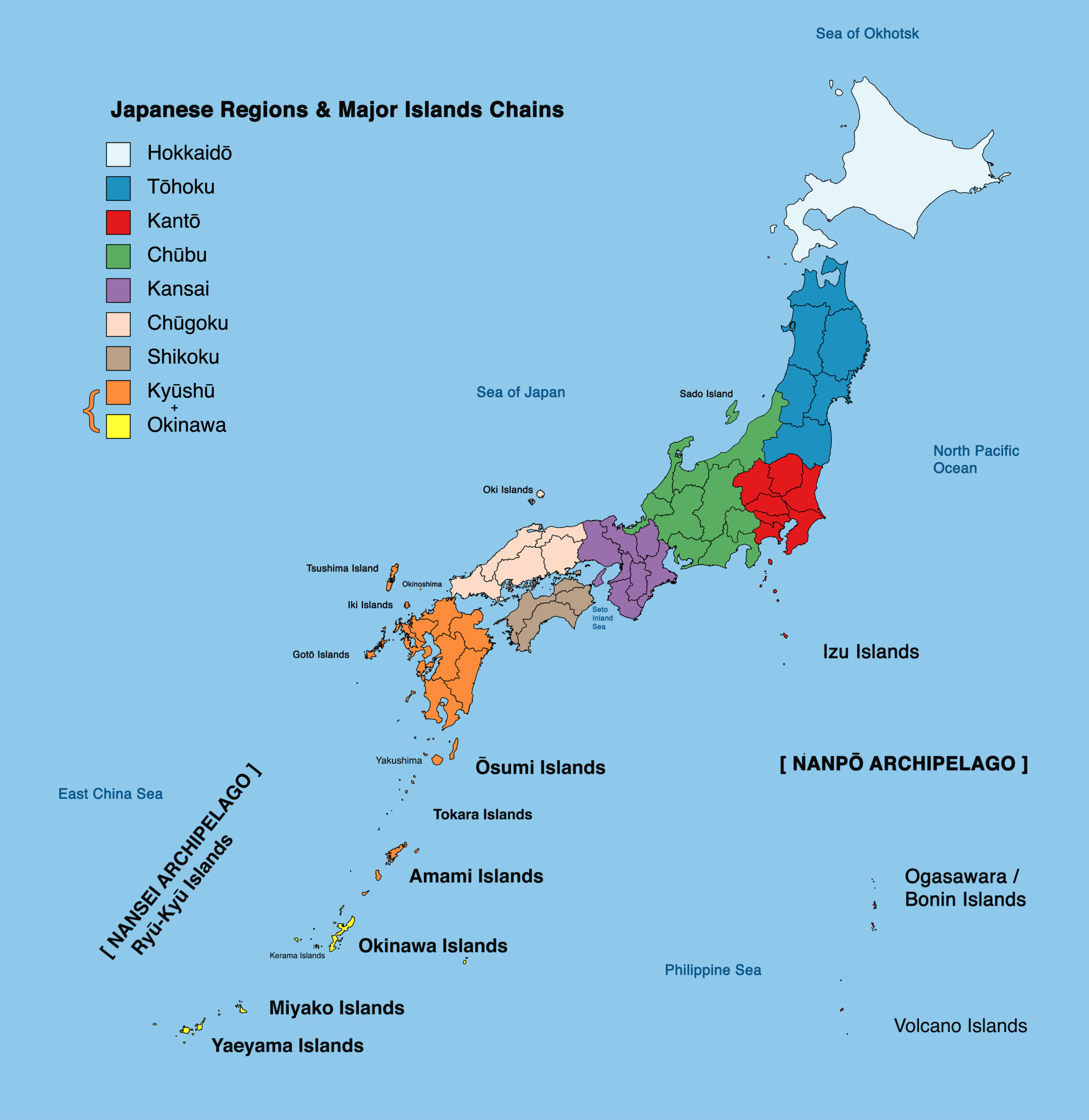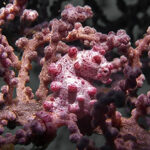Geography
Seas of Japan
Japanese seas and oceans
The islands of the Japanese archipelago are surrounded by multiple marginal seas.
All these seas are extensions of the North-Western Pacific Ocean, which lies to the east of Japan.
SEA OF OKHOTSK – north of Hokkaidō Island
NORTH PACIFIC OCEAN – west of Honshū Island, east of the Nansei Islands
PHILIPPINE SEA (PACIFIC OCEAN) – south of Honshū Island
INNER SEA / SETO INNER SEA – between the islands of Honshū, Shikoku and Kyūshū
SEA OF JAPAN / EAST SEA – off the east coast of Honshū and Hokkaidō islands, between the Japanese archipelago, the Korean peninsula, Sakhalin island and the Russian mainland.
EAST CHINA SEA – south of Kyūshū and along the west coast of the Nansei / Ryū-Kyū islands
KOREA STRAIT – a passage located between the Korean peninsula and the northern coasts of Kyūshū / western Honshū. The strait is split by Tsushima Island into the Western Channel and the Tsushima Strait or Eastern Channel.
Straits and inlets
The Japanese archipelago’s length and geographical position, at the end of the Eurasian continent exposes the islands a great seasonal and climatic diversity.
The Japanese islands are surrounded by multiple marginal seas, and powerful warm and cold oceanic currents (the Kuroshio-Oyashio system) flow directly along the coasts and through different straights, before blending in the surrounding waters.
Some currents are constant and others subject to seasonal changes – but all play a major role in creating Japan’s rich marine environment.
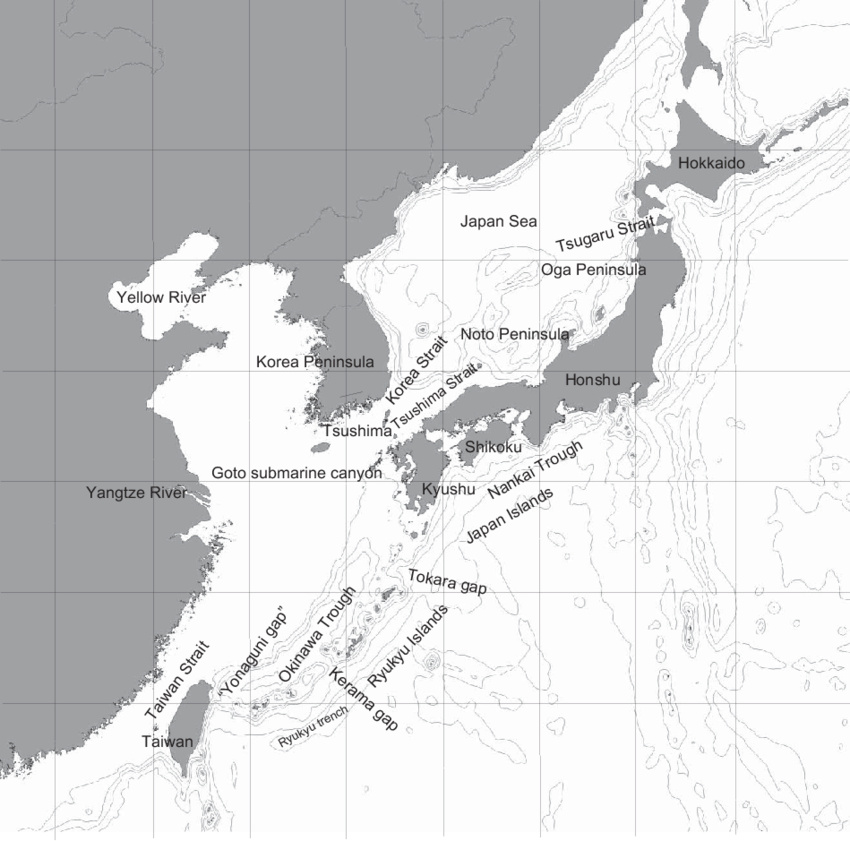
Index map of the Japanese islands – Image source: www.researchgate.net
To the north of Hokkaidō, Japanese coasts are in contact with the subarctic climates and waters of the North Pacific and the Sea of Okhotsk (much of which actually falls into Russia’s exclusive economic zone).
The Sōya Strait (or La Perouse Strait) runs between Hokkaidō and Russia’s Sakhalin islands, linking the Sea of Japan to the Sea of Okhotsk.
South of Hokkaidō, the Tsugaru Strait separates Hokkaido and Honshu Islands, and links the Sea of Japan to the Pacific Ocean.
To the east of Honshū is the Sea of Japan (also known as the East Sea), stretching between the main islands of Japan and continental China and Korea, and ending with the Korean Strait.
Image source: legacy.lib.utexas.edu
The Korean Strait is approximately 200 km across, and separates southwest Japan from South Korea and links the East China Sea to the Sea of Japan.
The Korean Strait itself is split by Tsushima Island, north of Kyūshū, into the Western Channel and the Tsushima Strait (or Eastern Channel)
The island of Shikoku, just off the island of Honshū’s west coast, also forms a narrow inner sea , the Seto inland Sea, enclosed by the islands of Honshū, Shikoku, and Kyūshū. The inland sea features multiple straits, and is doted with islands and harbouring complex currents.
The islands of Honshū and Kyūshū are separated by the Kanmon Straits or the Straits of Shimonoseki.
South and west of Kyūshū, we find the East China Sea, a rather shallow body of water with subtropical climate conditions.
The islands of the Nansei archipelago, stretching down to Taiwan, form the border between the East China Sea and the Pacific Ocean’s Philippine Sea, encompassing the subtropical southern islands of the Nanpō archipelago, that stretch far to the west and south with the Izu islands and then Ogasawara/Bonin islands.
In the Nansei Islands, the Kerama Gap / Miyako strait, separating the Kerama and Miyako Islands. is the largest strait (250km wide) in the island chain, and accounts for some marked cultural/linguistic differences
Naruto whirlpools – Seto Inland Sea – Image source: japan-magazine.jnto.go.jp
Major Lakes
Japan’s volcanic landscape also features over 30 freshwater lakes, the biggest one being Kansai region’s Lake Biwa, with a surface area of 670 km² and a depth of over 100+ metres, which fills a large fault basin on Honshū island.
The second-largest is Lake Kasumiga (with a surface area of 220 km²), located 60 km to the north-east of Tōkyō.
These are followed by Lake Saroma (with a surface area of 150 km²) on Hokkaidō, Lake Inawashiro (surface area 103.3 km²) in northern Honshū, and Lake Nakaumi in western Honshū (surface area 86.2 km²)
Some fresh water diving is possible in lakes, including but not limited to Lake Biwa. Famous lake diving highlights include :
Lake Motosu (surface area 4.7 km², maximum depth of 121 metres), which the westernmost of the Fuji Five Lakes. It is an altitude lake, located at an altitude of 900 metres, located in southern Yamanashi Prefecture, in Honshū’s Chūbu region.
Lake Shikotsu, (surface area 78.4 km², maximum depth of 363 metres) a caldera lake with a famous for having the clearest water in Japan (up to 50m+ visibility), located on Hokkaidō island.

Lake Shikotsu, Hokkaidō – Image source: goadventure.com

